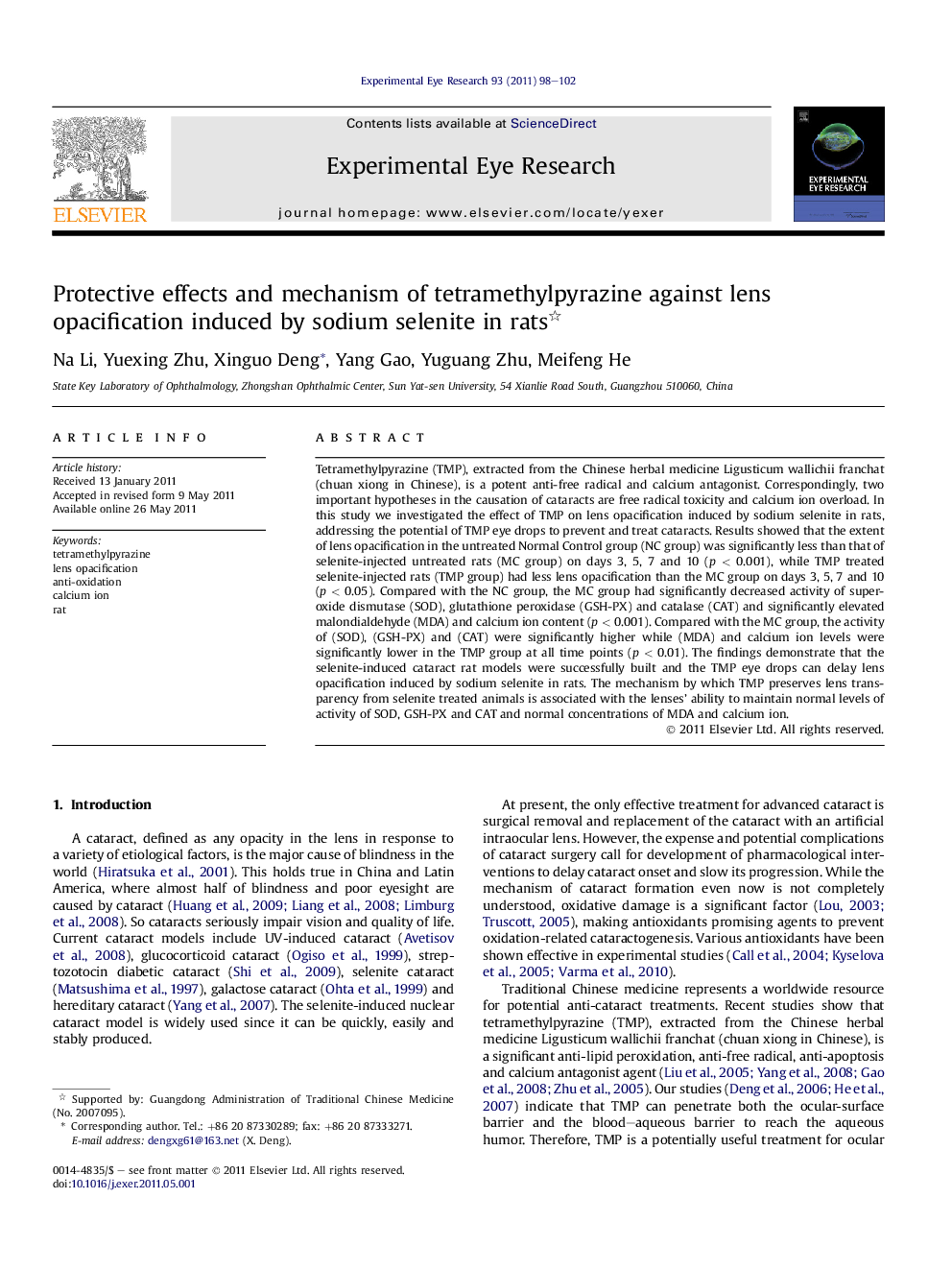| Article ID | Journal | Published Year | Pages | File Type |
|---|---|---|---|---|
| 4011475 | Experimental Eye Research | 2011 | 5 Pages |
Tetramethylpyrazine (TMP), extracted from the Chinese herbal medicine Ligusticum wallichii franchat (chuan xiong in Chinese), is a potent anti-free radical and calcium antagonist. Correspondingly, two important hypotheses in the causation of cataracts are free radical toxicity and calcium ion overload. In this study we investigated the effect of TMP on lens opacification induced by sodium selenite in rats, addressing the potential of TMP eye drops to prevent and treat cataracts. Results showed that the extent of lens opacification in the untreated Normal Control group (NC group) was significantly less than that of selenite-injected untreated rats (MC group) on days 3, 5, 7 and 10 (p < 0.001), while TMP treated selenite-injected rats (TMP group) had less lens opacification than the MC group on days 3, 5, 7 and 10 (p < 0.05). Compared with the NC group, the MC group had significantly decreased activity of super-oxide dismutase (SOD), glutathione peroxidase (GSH-PX) and catalase (CAT) and significantly elevated malondialdehyde (MDA) and calcium ion content (p < 0.001). Compared with the MC group, the activity of (SOD), (GSH-PX) and (CAT) were significantly higher while (MDA) and calcium ion levels were significantly lower in the TMP group at all time points (p < 0.01). The findings demonstrate that the selenite-induced cataract rat models were successfully built and the TMP eye drops can delay lens opacification induced by sodium selenite in rats. The mechanism by which TMP preserves lens transparency from selenite treated animals is associated with the lenses’ ability to maintain normal levels of activity of SOD, GSH-PX and CAT and normal concentrations of MDA and calcium ion.
► Observe the effects of TMP eye drops in a cataract rat model induced by sodium selenite. ► We observed the extent of lens opacification. ► We detected the activity of SOD, GSH-PX and CAT and the content of MDA and Ca2+. ► TMP eye drops can delay lens opacification in selenite cataract. ► The effects may due to the lenses’ ability to maintain normal levels of SOD, GSH-PX and CAT activity and MDA and Ca2+ content.
